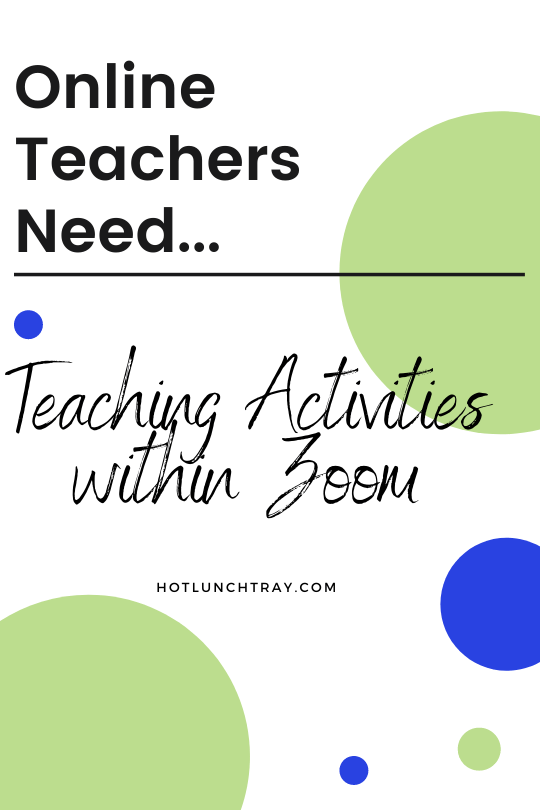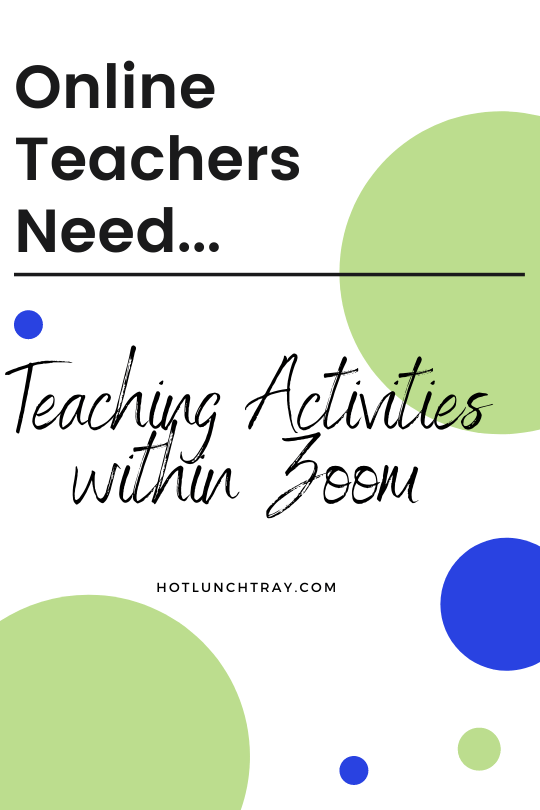As soon as a teacher feels comfortable with the Technical Tips for Zoom Teaching s/he will want to know how to incorporate traditional teaching techniques into this new format. Identifying teaching activities within Zoom will put educators at ease as to completing their teaching assignments regardless of platform or format.
Teaching Activities within Zoom
Teaching and learning at a distance is different than most of our K-12 experiences. It is a chance to take the best of what we did face-to-face and provide that to students and families; it is also a chance to abandon less effective practices.
Consider the graphics Tucker (2020) offers as start ideas for activities to introduce, reinforce, remediate on topics.
Refer also to the Using Video to Assess Student Attention in Virtual Class Meetings by Trust (2020) on the next page. Consider that your students may have a variety of reasons for not turning on their cameras. Instead of spending our energy and time on controlling if students turn their cameras on or not, we can build in ways for them to learn with or without video turned on.
Teacher Presentation
- Limit direct instruction to a large group to manageable seat time for those learning at a distance, be respectful of their time
- Ask yourself: could this be a recording instead of a live meeting? If it can be a recording, asynchronous session, why not give your students that flexibility?
- Provide notes to accompany any presentation before and, as possible, the presentation or source documents after the session for optimal engagement
Student Group Work
- Post, explain, and reinforce your expectations for live session behavior
- Provide clear directions to be academically successful in advance of breaking students out
- Monitor all groups by product and by entering all groups to monitor work
What Should You be Doing?
The Distance Learning Playbook (Fisher, et al., 2021) provides a general student checklist to ready, provide, and close a live session. Feel free to copy this interpretation of the checklist and tailor it to your audience.
References
Fisher, D., Frey, N., Hattie, J. (2021). The Distance learning playbook Grades K-12: teaching for engagement and impact in any setting. Corwin Press, Inc., a Sage Publishing Company.
Trust, T. (2020, September 11). Using Video to Assess Student Attention in Virtual Class Meetings. Torrey Trust, Ph.D. https://torreytrust.com/projects/
Tucker, C. (2020, August 20). Asynchronous vs. Synchronous: How to Design for Each Type of Learning. catlintucker.com. https://catlintucker.com/2020/08/asynchronous-vs-synchronous/







2 Pingbacks